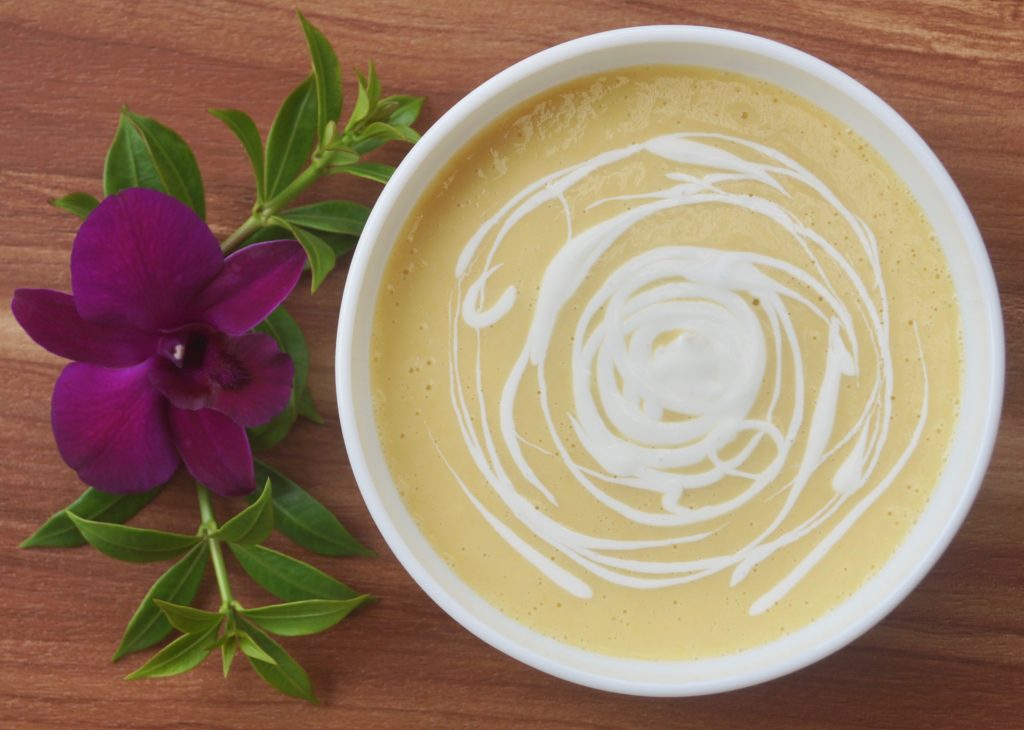
Vegetable soups are SO underrated! A nice hearty bowl of well-made veggie soup is often my go-to dinner, be it summer or winter! I’ve made so much soup over the years that I’ve developed a loose formula that I find to be quite successful.
One of my biggest concerns with vegetable soups was whether it was filling or not. Just a veggie soup for dinner with no protein seemed a bit ridiculous at first. Initially I would supplement my soups with some grilled chicken, kebabs or some kind of protein. I don’t need that anymore though! Try this a few times and I’m sure you’ll change your mind too!
I’m not crazy about structures and patterns but this one became painfully obvious to me the more I made different kinds of soups. If not a formula, then some simple guidelines that you may choose to follow! I’ve broken them down into six points so let’s jump right in.
1. Core Veggie
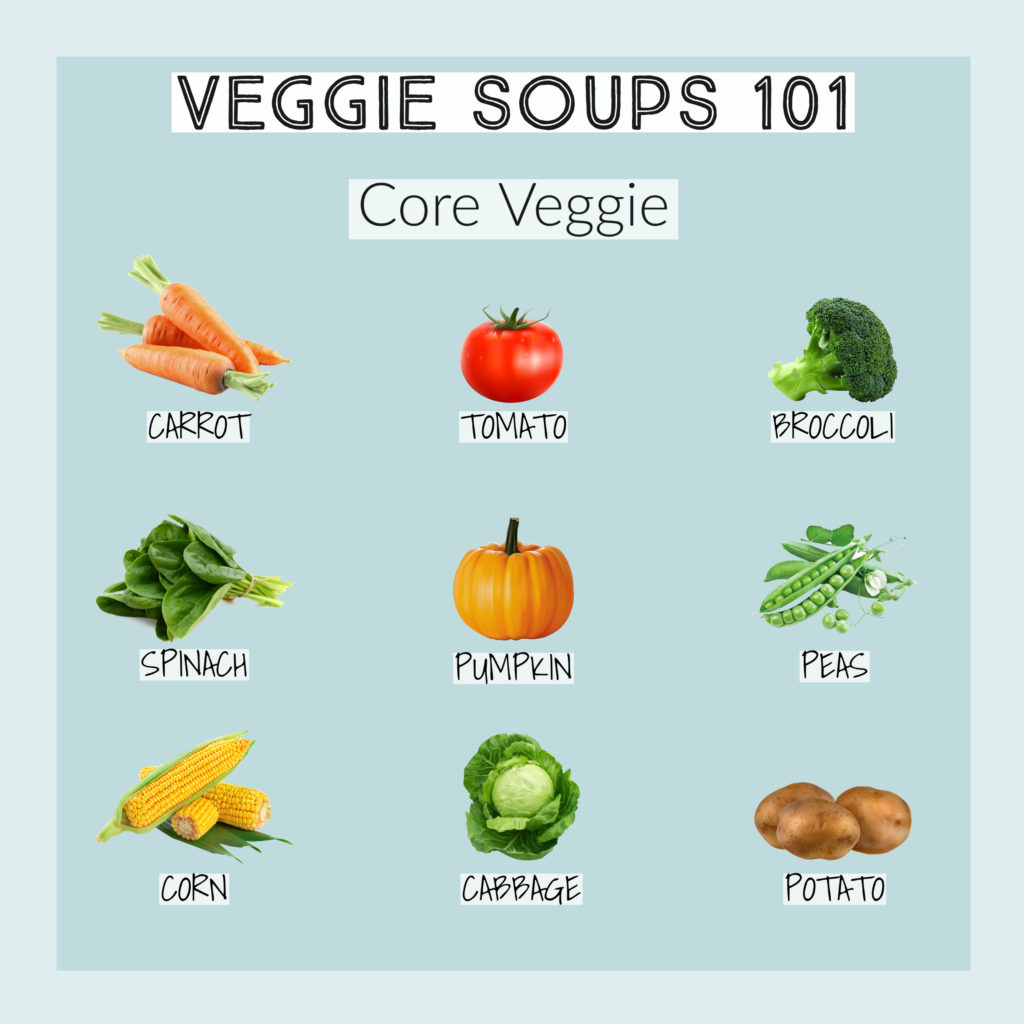
This one’s pretty obvious, which veggie is going to form the base of your soup? Carrots, Potatoes, Corn, Pumpkin, the options go on. If you’re new to the soup game I would suggest picking just one vegetable. Master the one, and you shall master them all soon enough.
2. Flavour Pairing
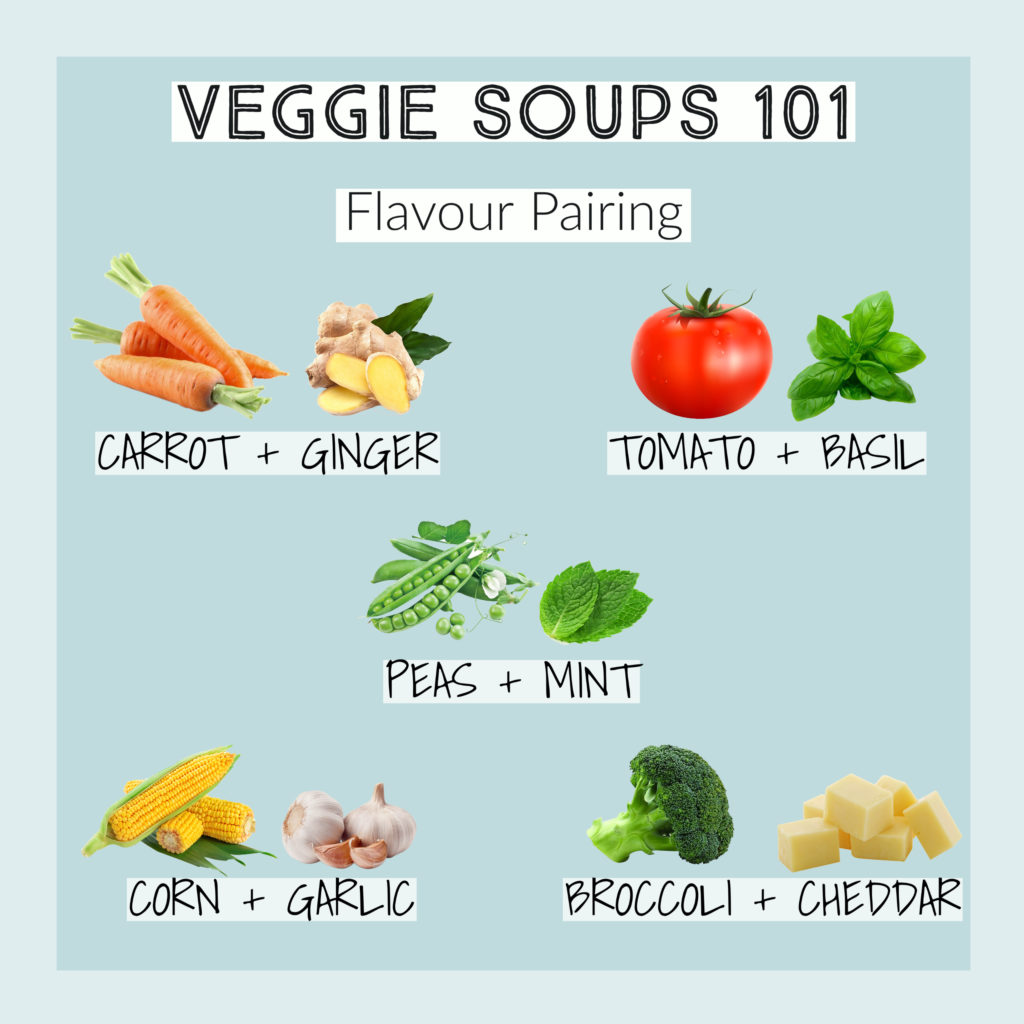
Every hero needs a sidekick and that’s exactly what these star aromatics are. They elevate the flavour of your core ingredient and make you feel a little fancier saying burn garlic corn soup instead of just corn soup. There are a ton of popular pairings – Carrot and Ginger, Tomato and Basil, Potatoes and Leek, Peas and Mint, Pumpkin and Allspice and so on. I like to think of it as the star aromat. While I’ll keep the other standard aromatics, I’ll pick one flavour to highlight.
3. Aromatics
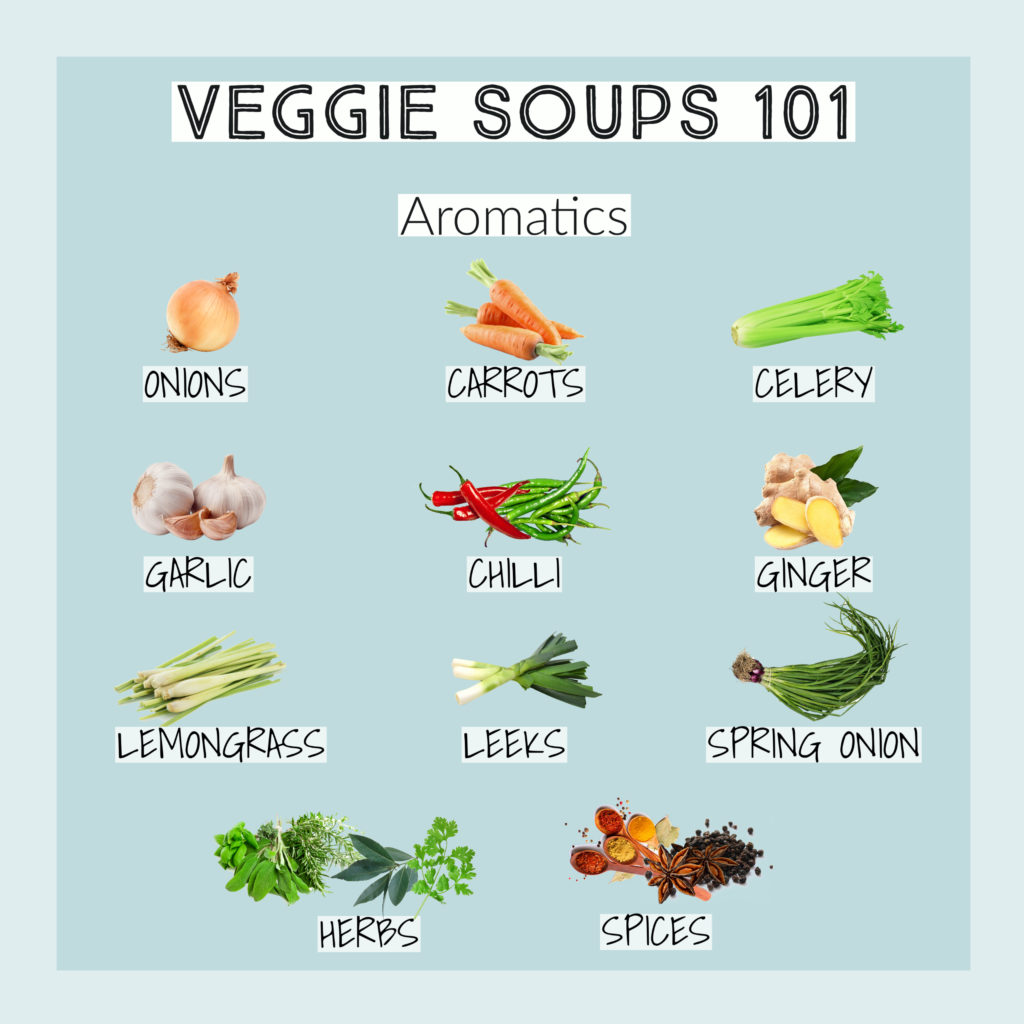
Aromatics are a great way to add some flavour into your soup. Especially if you’re not using stock. Frying onions, garlic, celery, lemongrass or other aromatics imparts amazing flavour to your soup. I usually add onions and garlic depending on what kind of soup I’m making. Onions are your safest best, because they compliment almost any soup out there!
Aromatics are key not only to soups but to most sauces, curries and stir fries. Understanding which aromatics to use for which cuisine/dish can take some practise but it’s a skill that’ll come in handy. Here’s an enormously helpful guide on aromatics that explains it all!
4. Cooking Liquid
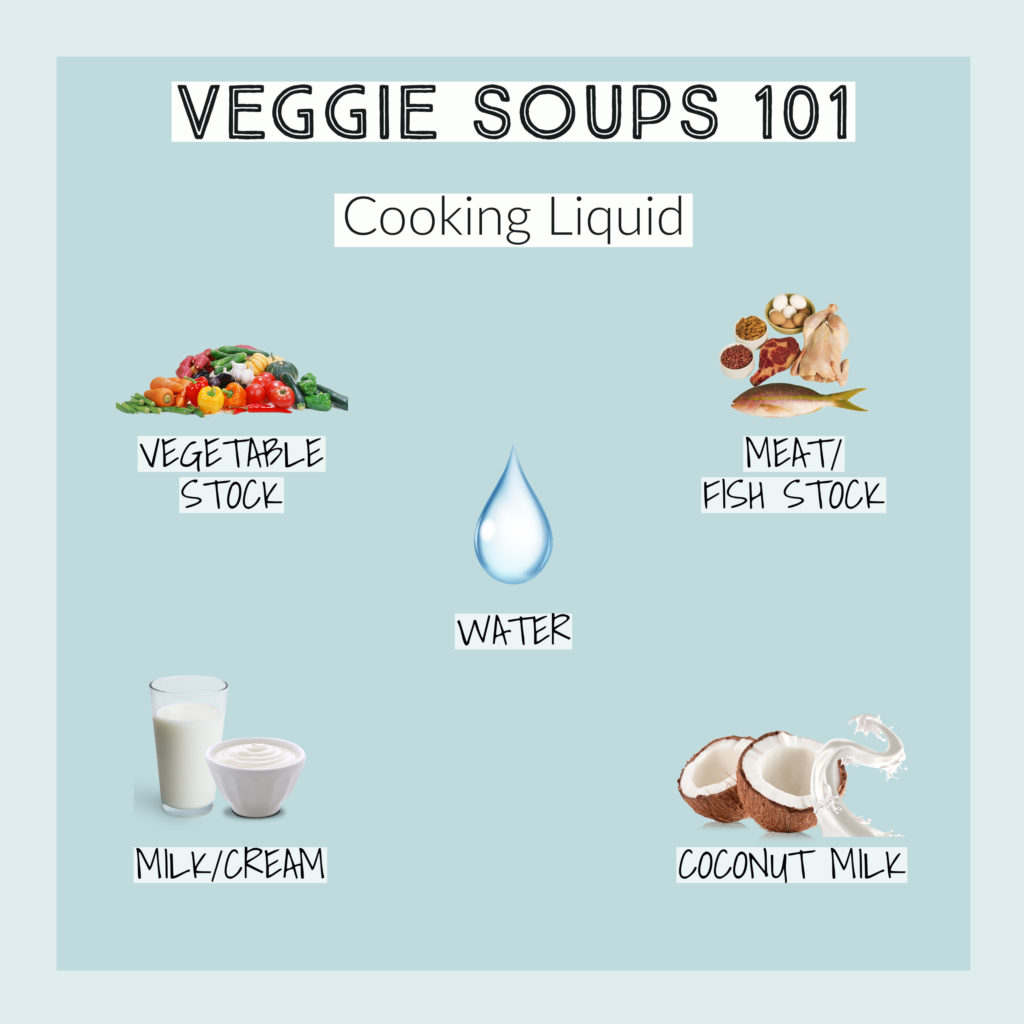
Chicken stock, Veggie stock, Water, Milk/Cream, Coconut Milk or a combination of these. Adding stock is always a great idea, it imparts a complex flavour to your soup, but you can also use water if you haven’t got any stock on hand. Go heavy on your aromatics and your soup will turn out just fine. Milk and/or cream produces a richer more indulgent soup. I use a combination of stock and coconut milk for a pumpkin soup that tastes divine. Experimentation is the key. (Or googling. That works too!)
As far as how much liquid to add, I usually do enough to cover all the veggies by an inch or so. Check on the soup occasionally and add more water if you feel your veggies need a bit more time. Once my soup is blended, I’ll usually check the consistency and add some water after.
For soups you’re not blending, I’d recommend a bit more liquid.
5. Consistency
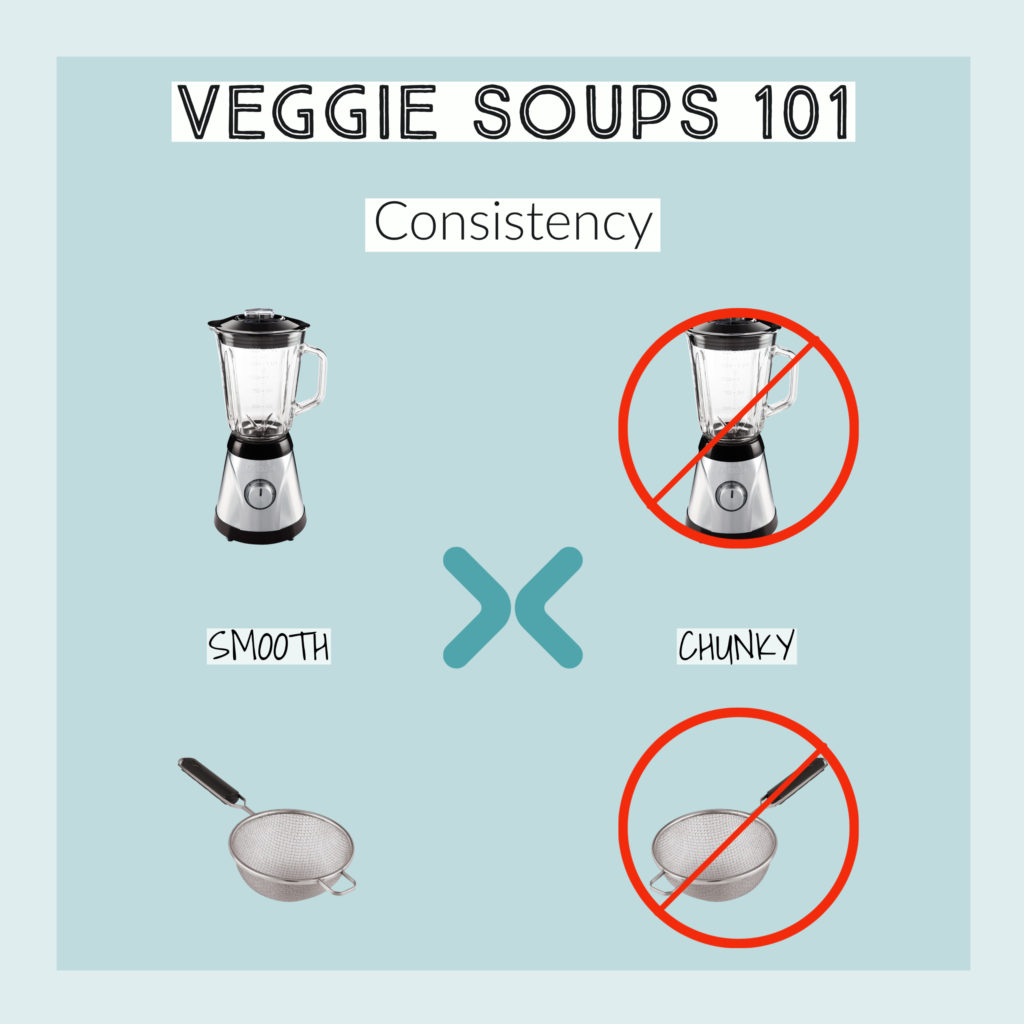
To blend or not to blend? To strain or not to strain?
Consistency is key to a great soup. Some people enjoy chunky soups, while some prefer smooth soups. It all boils down to preference. My carrot ginger soup blends beautifully, whereas the roasted garlic corn soup is super chunky. While you can strain it out, I loathe straining things (and cleaning strainers) and I figure the extra fibre is good for you right? Completely up to you.
Soups with cabbage and mixed vegetables can be blended but they’re far better left unblended. The veggies give you great crunch and keep things interesting. You can also blend half your soup, something that’s usually great for mushroom and sweetcorn soups.
6. Extras/Garnish
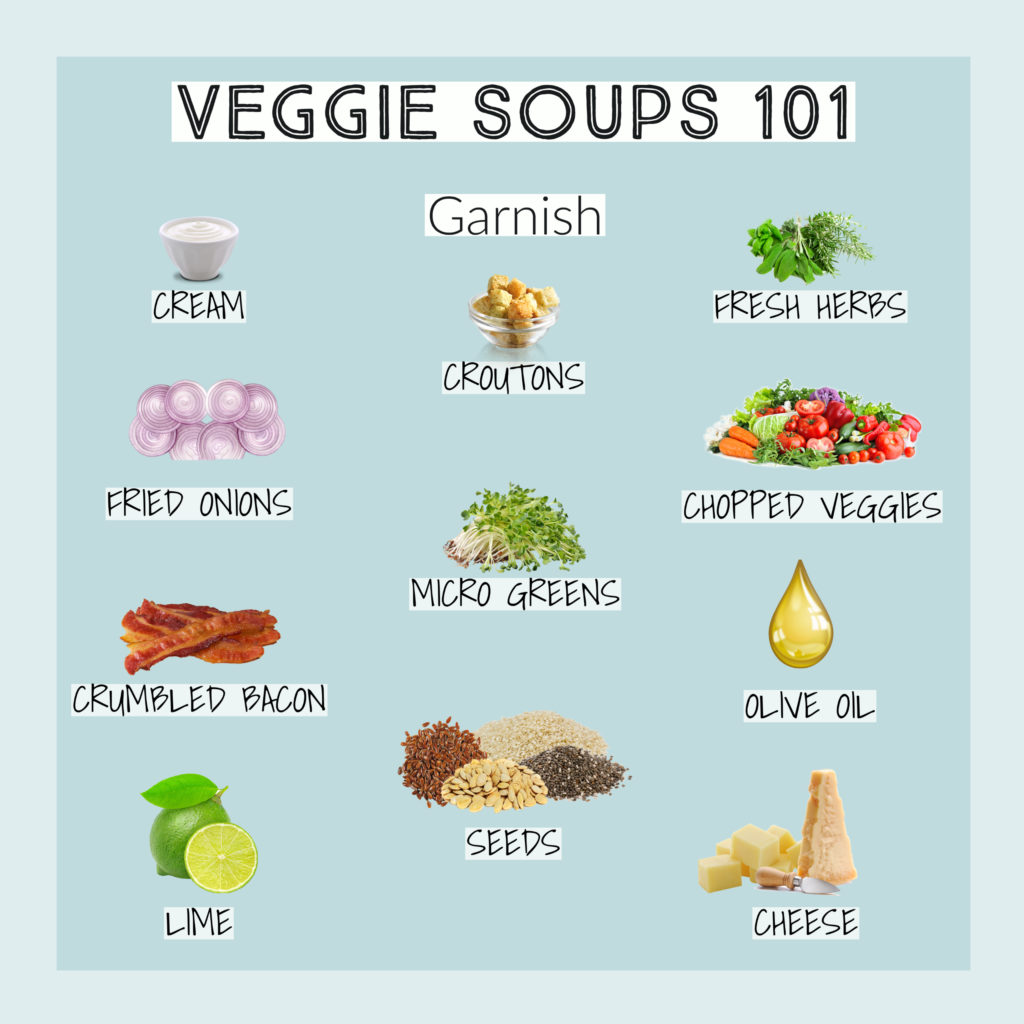
Garnishes are a great way to tie the whole dish together. Not gonna lie, I feel super fancy when I’m garnishing soup! I have spent sooooo much time trying to do fancy patterns with cream on top of my soup! (The key is to thin the cream out a bit before using!) But the garnishes aren’t just for appearance, that little dollop of cream, fresh coriander or (eternal fav) crunchy croutons add richness, freshness and texture to your bowl of soup.
So there you have it! These are my general guidelines to making the perfect bowl of veggie soup! While the whole point of this post is to encourage experimentation, if you feel like you need a little help, my Burnt Garlic Corn Soup is a simple enough recipe that follows this ‘guide’.
